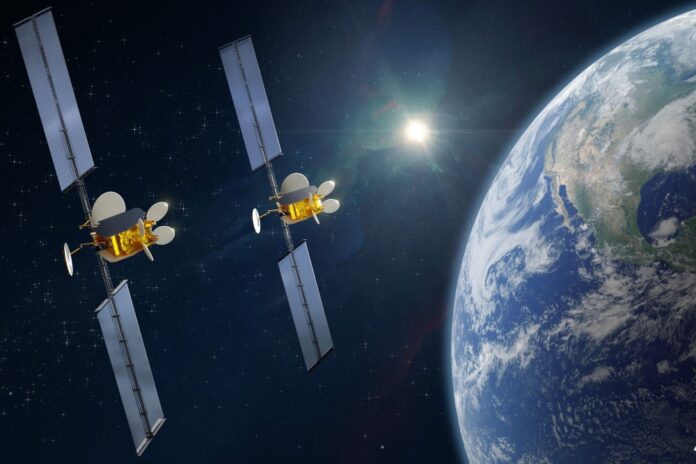Satco invests in Paris-based Greenerwave and plots to offer multi-orbit solutions for all business units by the first half of 2025
Intelsat said it wants to be the first operator in the world to offer multi-orbit solutions for all relevant business units by the first half of 2025 thanks to a new satellite terminal strategy that it said will deliver advanced capabilities and improved economics.
“Intelsat is making strategic bets on new technologies, including new investments in innovative terminal providers,” said Intelsat CEO David Wajsgras. “More and more customers will come to count on the broad reliability profile of multi-orbit solutions, and it is key to our future success. No single-orbit solution can match what Intelsat can offer when it comes to performance, resiliency and commercial flexibility.”
Intelsat has been trying to bring satellite and terrestrial networks a crucial step closer to achieving the goal of leveraging the widely used Ku-band spectrum as a fully standardised 5G solution in space, extending and complementing terrestrial networks. Therefore, it is no surprise the company wants multi-orbit terminal solutions. In July, after a two-year campaign, Intelsat successfully led the approval of the 3GPP “Ku-band Work Package” for standardisation at last month’s 3GPP meeting in Shanghai.
With the launch of a new robust terminal strategy, Intelsat said it can now deliver multi-orbit managed-service solutions across all relevant verticals including commercial aviation, government and mobility applications.
“Intelsat began the process of delivering operational multi-orbit terminals to the military and commercial airlines about two years ago,” said Wajsgras. “Today, our multi-orbit strategy is resonating with customers and validating our approach.”
The Intelsat multi-orbit terminal strategy includes minority investments with a few cutting-edge terminal providers. Intelsat recently invested in Paris-based Greenerwave and signed a technology agreement to develop an innovative electronically-steerable antenna that will be integrated into high throughput, multi-orbit terminals for network and data applications, as well.
Fast switching between multiple networks and multiple orbits, Greenerwave’s Electronically Steered Array (ESA) terminal will include Intelsat custom features to deliver unmatched reliability and performance for a differentiated connectivity experience for broadband, mobility, media and government customers, globally.
The new scalable terminal will be available as part of the Intelsat’s managed service offerings, high-throughput, reliable connectivity without the worry and hassle of managing a satellite network. This new terminal combines flexible beamforming, real-time reconfiguration, and low-power consumption. A key innovation includes smaller dimensions that features interleaved receivers and transmitters on a single antenna panel. The antenna can operate as either a half-duplex or full-duplex terminal based on requirements, all while reducing the panel size by up to 50%.
Greenerwave’s state backers
In February Greenerwave closed a €15 million Series A fundraising round from the Defence Innovation Fund, underwritten by the Defence Innovation Agency and managed by Bpifrance, Safran Corporate Ventures, Intelsat, BNP Paribas Développement and Plastic Omnium.
According to EU startups, the French company, a spin-off from the Institut Langevin, an academic laboratory under the auspices of ESPCI Paris and CNRS, developed a breakthrough technology using reconfigurable intelligent surfaces (RIS) and algorithms to direct signal-carrying waves more effectively in real-time.
Greenerwave designs metasurfaces comprising elements that “shape” electromagnetic, enabling directional beams to be generated and controlled. These metasurfaces consist of a group of elements of centimetric size called pixels that act as micromirrors. Each pixel can modify the sign of the reflected wave. The interactions between pixels and microwaves are managed by algorithms derived from the world of physics that direct waves after they reflect on the surface.
In March, Greenerwave conducted successful tests with long-time partner Direction générale de l’armement (DGA) and the experts from DGA MI – Maîtrise de l’information using its satellite communication terminal for both military and civilian applications.
The trials at the DGA site in March connected military stations with a Greenerwave antenna station, enabling reliable videoconferences via the French military satellite Syracuse 4A. The tests highlighted Greenerwave’s technological advancements, showing advanced wave control, higher data rates, and the antenna’s multi-beam capability. This enabled secure, simultaneous connections to two government satellites, including Syracuse 4A.


